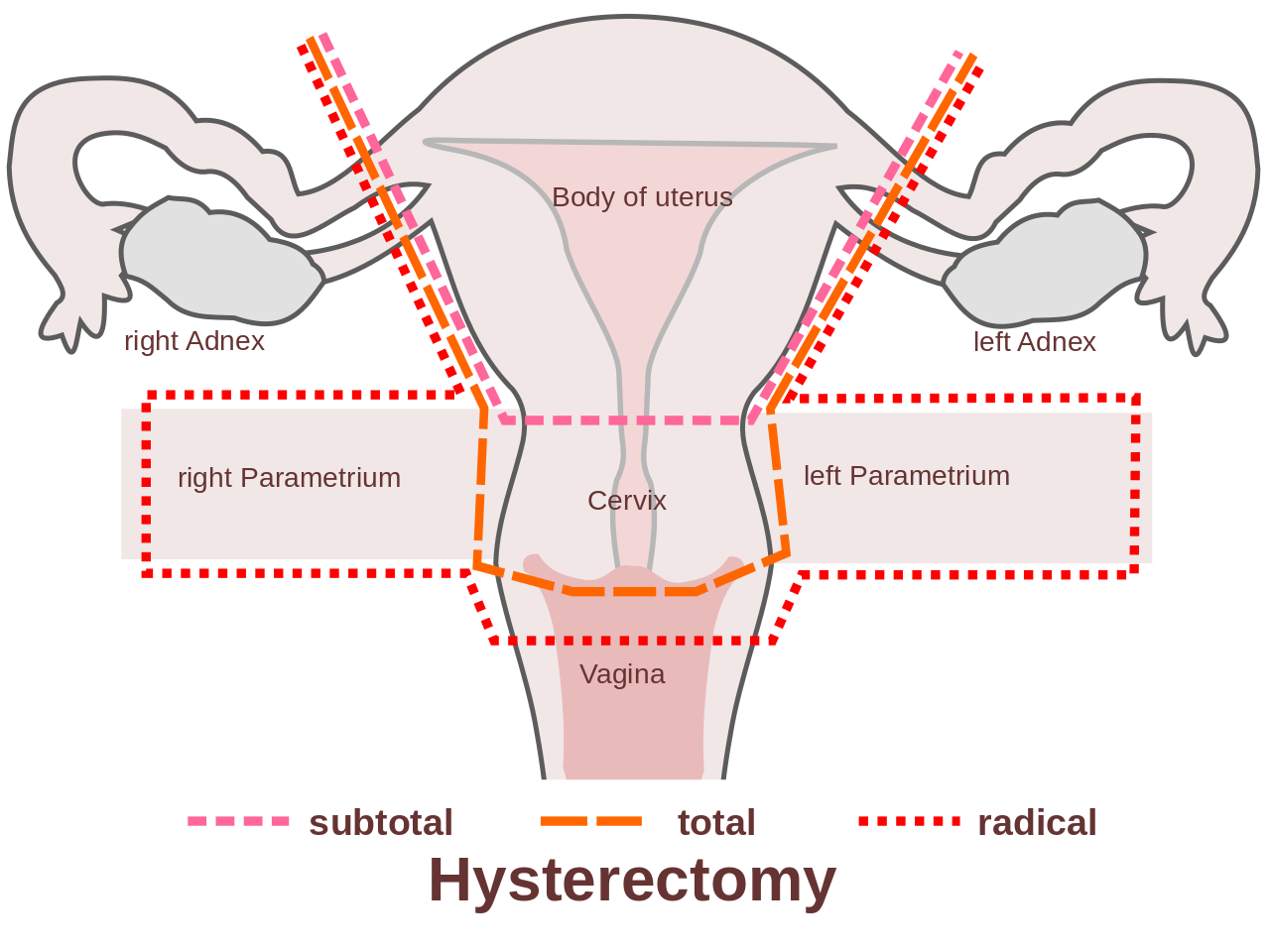Hysterectomy refers to a surgery where the uterus gets removed. The uterus is an important part of any woman and takes part in several functions of 'normal' womanhood, and at Garbba Rakshambigai Fertility Centre, we are strongly in favor of retaining it in your body unless removing it has a definite benefit in your individual case. However, it may be required to be remove in certain conditions when having the uterus creates certain problems that can be deleterious to your health.
Once the function of child bearing has been completed, the uterus may be safely removed without much consequences as mentioned below
Fibroids are non-cancerous lumps that develop from the muscle wall of the uterus. Many of them are not problematic and can be safely observed. If they are causing problems such as heavy bleeding during menses, painful menses, lower abdominal pain, urinary and bowel disturbances, they can be treated with medications. In cases where they do not respond to medicines, surgery may be required. If the fibroid is single, it can be treated by laparoscopic removal of the fibroid alone without having to remove the entire uterus. However, if there are multiple fibroids that are not responding to medical treatment, hysterectomy may be required to overcome the problems mentioned above.
The uterus has tissue with high turnover rates that can develop several types of cancer. Cervix is a part of the uterus and cancer of the cervix is amongst the most common cancers in women. The inner lining of the uterus can also develop a cancer called endometrial carcinoma. In such cancers early detection and removal of the uterus along with appropriate medications can be a life- saving procedure.
Uterine prolapse is a condition where the supports of the uterus become weak and the uterus descends down through the vagina. When the uterus starts descending in such a manner, it can cause ulcerations, traction pain, urinary problems etc. If detected early, pelvic exercises may be initiated to control the condition. However, in later stages, a hysterectomy may be required.
Endometriosis is a condition in which the lining of the uterus starts growing in unusual locations other that the inner uterine wall. When such tissue grows into the uterus wall, it is called adenomyosis. It may be associated with extremely painful periods. Hormonal therapy is the first line of management in endometriosis. If the disease is so severe that it is not controlled by hormonal medicines, hysterectomy is performed.
Abnormal and excessive uterine bleeding during menses may result in so much blood loss that the body is not able to compensate for it. Women may develop anemia and fatigue from this. If this blood loss is not controllable by medicines, hysterectomy is a permanent solution in women who have completed their family.
• Pre- op preparation includes blood tests, urine test, ECG, chest X- ray
• Hysterectomy will require you to have anesthesia. The anesthetist will see you prior to the surgery and will make sure that anesthesia is safe for you.
• You will be asked to get admitted one day before the surgery and advised liquid diet on that day
• On the day of surgery you will be kept nil per oral (without food or liquids) for approximately 8 hours and started on IV fluids
• Blood will be reserved and transfused only if necessary
There are several techniques through which hysterectomy can be done. The traditional method to remove the uterus is called 'abdominal' hysterectomy and refers to removal of the uterus through a standard incision made at the level of the waist line. Due to the advances in laparoscopy, at Garbba Rakshambigai Fertility Centre, we have been able to master the technique of removing the entire uterus with laparoscopic assistance, avoiding long scars, minimizing postoperative pain and enabling quick recovery from the surgery. We resort to open hysterectomy only in exceptional cases. The other method of hysterectomy, namely, vaginal hysterectomy, involves removal of the uterus through the vagina and is usually done in patients with uterine prolapse.
With current anesthetic techniques, waking up from surgery and anesthesia is usually very smooth and pain is well controlled. You are monitored to make sure that all vitals are stable. Food may be withheld until your bowel starts functioning well. If you are passing gas, it usually means that the bowel has resumed functioning. Till the time that you start taking liquids and food, you will require intravenous fluids for support. You will generally be discharged 3-5 days following the surgery. The wound takes 8-12 days to heal well.

Once the uterus is removed, you will stop getting periods and you will not be able to conceive. If the ovaries have been removed along with the uterus, you may get menopausal symptoms that require hormonal therapy. If the ovaries have not been removed, they slowly stop functioning over 3-5 years. Backache is common among women in their forties and it has been proven that it is not related to the uterus removal or use of a spinal anesthesia, except under very rare circumstances.
Talk to us if you have any queries on hysterectomy, the treatment involved and recovery methods. We have an expertized team to guide you on the infertility treatment methods.